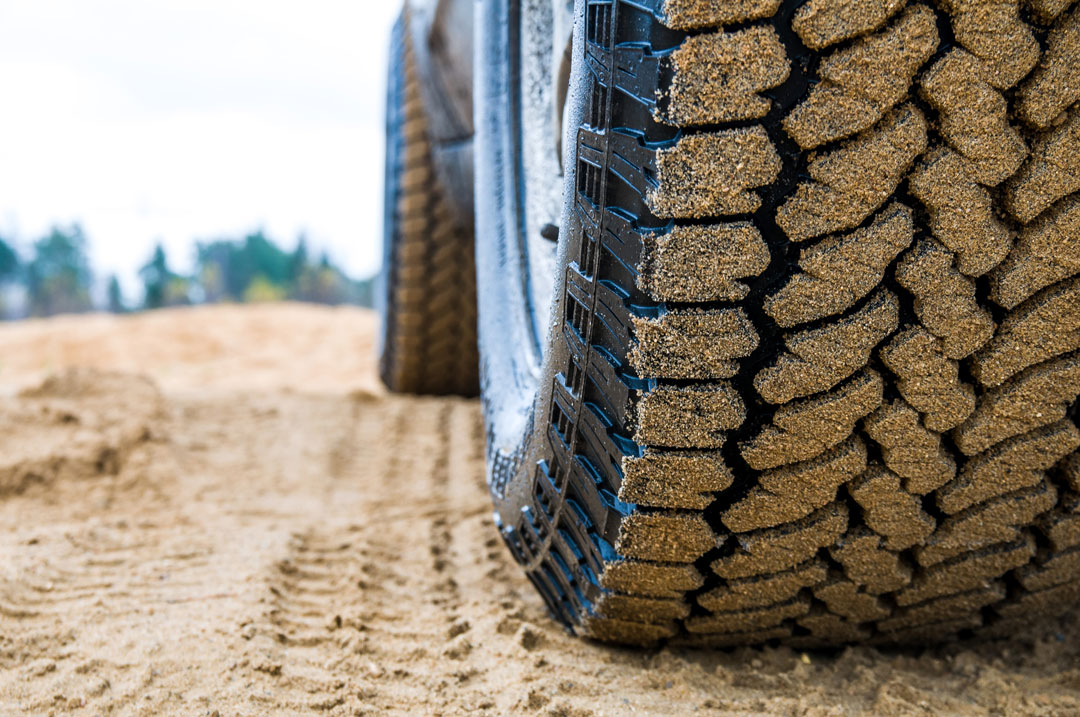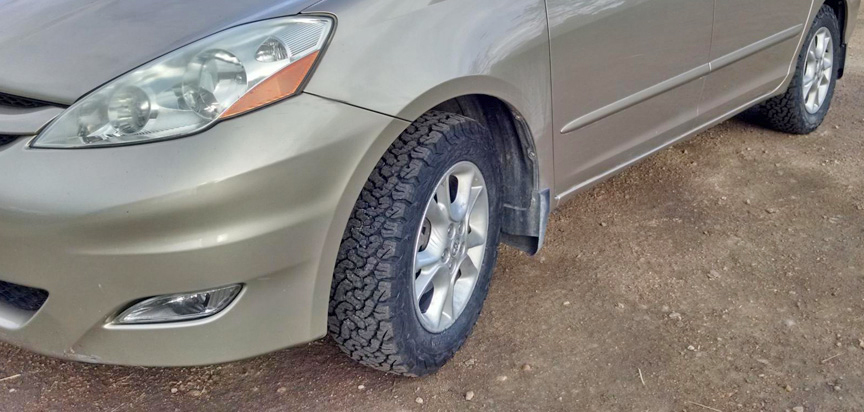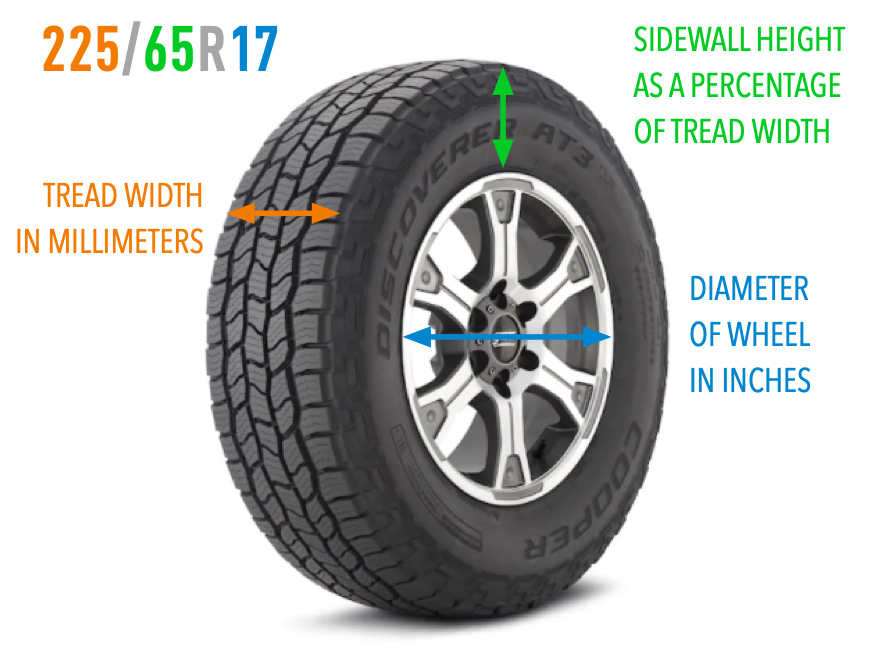
One of the first things I did when I bought my used Chevrolet Express was replace the tires. I knew nearly all my nomadic driving would be on pavement, so I got highway tires. Really good ones. And they worked well enough for my limited off-pavement driving.
About two-and-a-half years, 55,000 miles, and one flat later (a flat that occurred on pavement) it was time for replacements. I got the same tires.
Three years, 70,000 miles, and three flats later (two of the flats occurring off-pavement) I replaced the tires again. This time I decided to go with all-terrain tires because they’re supposed to be more puncture resistant. And because I was spending more time traveling rough “roads” on public land. And because they look more butch. (I need all the butchitude I can get.)
Most people think, well, yeah, a full sized van is essentially a truck, so switching to all-terrain tires is a natural thing. But what about something like a minivan? They’re intended as family haulers and grocery getters, not wilderness adventure vehicles. You can’t get all-terrain tires for them. And if you could, they probably wouldn’t fit. Right? That’s what I thought, anyway.

But out of curiosity, I started poking around tire sites. TireRack.com (which is in no way paying for this mention) offers a lot of easy to find technical information. I started with their shop-by-vehicle tire picker and chose, oh, how about a 2017 Dodge Grand Caravan. Tire Rack told me the factory tire size is 225/65R17. When I viewed the choices, it offered to sort them by category. And one of the categories was all-terrain. Wow, really?
Okay, but would they fit within the wheel wells without rubbing anywhere? I selected the ever-popular BFGoodrich All-Terrain T/A KO2. Then I clicked on the specifications. The overall diameter was listed as 28.5 inches, and the section width (widest part of the tire) was 9.0 inches. Then I compared those numbers to some highway tires, like the Michelin Defender LTX M/S. Its specs were also 28.5 and 9.0. Bingo! The all-terrain tires would fit.

Cool. What about, let’s say, a 2005 Honda Odyssey and its 235/65R16 tires? Hmmm, no all-terrain options. But what about newer Odysseys that have larger 235/65R17 tires? Yup. What about minivans with 18-inch wheels? Yup. And 20-inch wheels? Nope.
It used to be that all-terrain tires were made just for Jeeps, trucks and full-sized SUVs. The LT designation in the size stands for Light Truck. But the boom in crossovers—the SUV’s smaller siblings—has created a demand for more all-terrain tire sizes. So, depending upon your wheel and tire size, you might be able to fit all-terrain tires on your minivan. But it means shopping by specs, not necessarily by brand or price.

ABOUT TIRE SIZES
The first number is the tread width in millimeters. (Tread width isn’t as wide as the section width.) The second number is the sidewall aspect ratio—a percentage of the tread width. The R means radial ply construction. The third number is the wheel (the metal part) diameter in inches. Changing one of those measurements while keeping the other two the same will change the diameter (and therefore circumference) of the tire, which will also affect your speedometer reading and fuel mileage because of a slightly different number of rotations per mile. It’s possible to keep the same diameter/circumference by juggling two or even three of the measurements. A little bigger here, a little smaller there and you’re ready to go.
THE PROS OF A/T TIRES
More rugged
Deeper tread
Higher load rating
Better off-pavement traction
Longer life
THE CONS OF A/T TIRES
Higher cost
Higher weight
Lower MPG
Might be noisier

Yay! Very informative and timely info, Al.
I work at a salvage yard in Illinois. I’ve seen at least one Chevy Traverse come in with all terrains and running boards. I’m not sure of it’s off road worthiness, but it did look “butch”.
My daily/camping rig is a 2011 Express 2500. It came with heavy duty LT highway tires. They’re the same ones we use on our delivery vehicles at work, so I know they’re tough. That being said, I’ve had traction problems when driving through wet grass on a slight incline. When it comes time to replace the tires, the rears at least will get all terrains. If the rear end ever blows, I’m definitely swapping in a limited slip as well.
You might have trouble finding a limited slip for an Express 2500, depending on which rear end it has. My 2500HD came with a Dana 60S, a.k.a. Super 60. I haven’t been able to find an LSD or Torsen-style diff for it.
Wow! Easy to read, most informative article. And very timely. I’m in Florida now visiting my brother who is helping me with upgrades to my AWD, SUV Crossover. I have all-season tires, which have served me well, and still had 10,000 miles of warranty and a lot of tread remaining when I purchased new. I rotate and have a wheel alignment done every time I change the oil. I also have an air compressor and regularly check my tires to ensure they are all evenly balanced with the same PSI, which just happens to be the same for the front and back end. I think that despite the rough roads I often take, they’ve fared well because of consistent maintenance.
Even so, this past year I had a flat after navigating over some rocky, high-desert terrain. What I learned from that experience is that I wanted AT tires. What I learned after that was I would be sacrificing fuel economy. So, I stuck with AS tires but I purchased five of them and an additional rim so that I don’t have to purchase an emergency replacement tire different than the others on my vehicle. I wasn’t sure that it would, but a full-size tire and rim fit into the spare tire carrier located beneath my vehicle. Now I can change out a tire and wait until I get to a location where I can purchase another same make replacement from a vendor of my choice. That hard-won off-road experience also taught me that I needed a couple of other things to assist my 70-year-old self with changing a tire. I now carry a 2×6 board to support my jack in sandy areas, and an impact gun to turn the jack and remove the lug nuts.
Great article, Al, and thank you especially for the picture showing the explanation of the numbers…saved for future reference!
Good article.
I’ve been wondering if I should invest in AT tires before my trip winter 2022-23. I will be driving across the country on visits and then spending the winter in the SW desert. New England to Washington via northern tier states, then south to AZ.